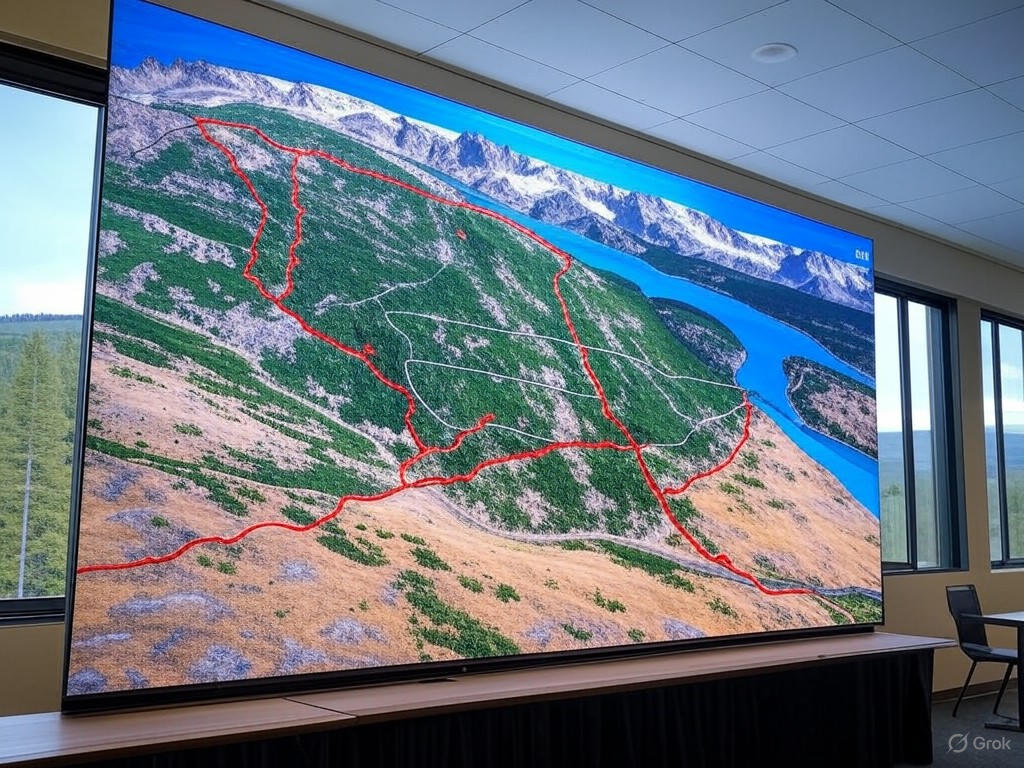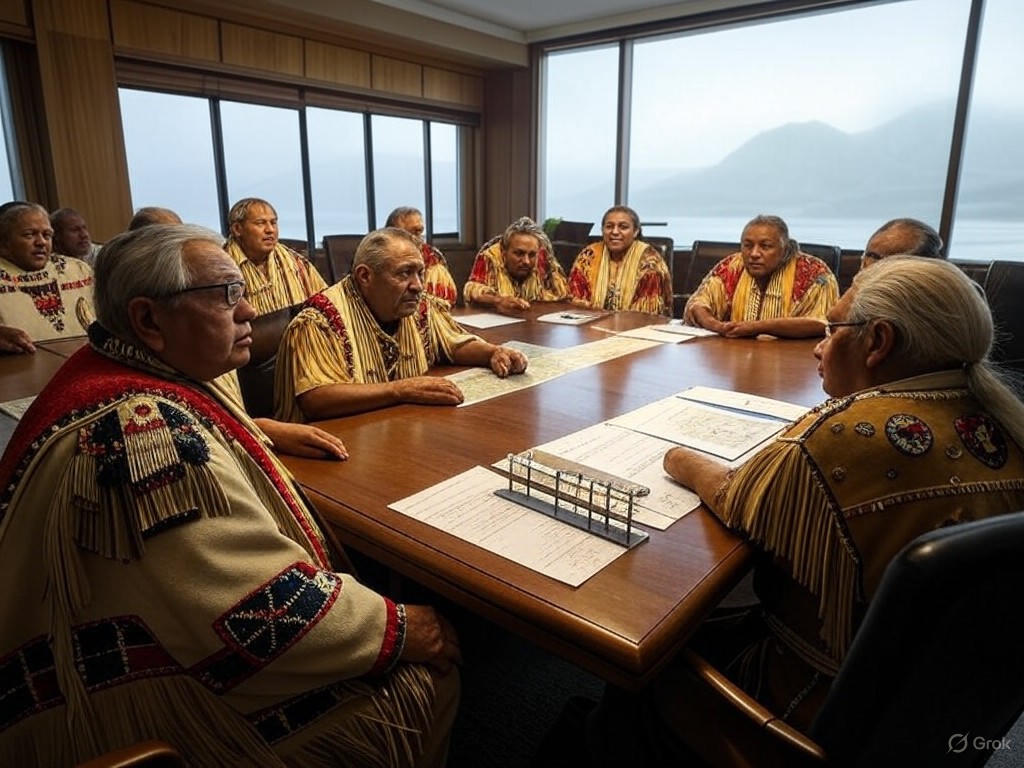Enbridge’s Pipeline Proposal: BC’s Next Mega Project?
In the vast tapestry of global energy dynamics, where demand for reliable resources often clashes with regulatory thickets, Enbridge’s proposed pipeline to British Columbia’s coast stands as a testament to the enduring pull of practical progress. This project, aimed at bolstering North America’s energy infrastructure, promises to ferry crude oil from Alberta’s oil sands to coastal terminals, potentially unlocking new markets in Asia. Yet, it’s mired in a web of legislative hurdles and Indigenous opposition that reflect deeper tensions in energy policy. As a proponent of free-market principles and limited government intervention, I argue that while these challenges must be addressed with respect for established rights, overzealous regulation risks stifling economic vitality at a time when energy security is paramount. Drawing from the rugged pragmatism of forgotten frontiers, let’s examine this issue with clear eyes and a steady hand.
Enbridge, a stalwart in the energy sector, envisions this pipeline as a lifeline for Canada’s resource economy, spanning hundreds of miles through varied terrain to reach British Columbia’s Pacific ports. The project isn’t just about pipes and pumps; it’s a barometer for how free markets can drive innovation and job creation in an era of fluctuating global demand. According to estimates from industry analysts, such infrastructure could inject billions into local economies, fostering employment in engineering, logistics, and related fields. But as with any venture that treads on public lands, the path forward is fraught with bureaucratic obstacles. Federal and provincial reviews under Canada’s environmental assessment processes demand exhaustive studies on everything from wildlife impacts to carbon emissions, often extending timelines into years. This isn’t mere red tape; it’s a reflection of how government oversight, while necessary, can tip into excess, delaying projects that might otherwise fuel economic growth.

This map illustrates the proposed Enbridge pipeline's path through Alberta and British Columbia, highlighting key geographical challenges and potential economic corridors.
The Legislative Labyrinth: Hurdles on the Horizon
Delving into the legislative hurdles, one encounters a maze of regulations that exemplify the pitfalls of over-regulation in energy development. In British Columbia, the project must navigate approvals from bodies like the National Energy Board (now part of the Canadian Energy Regulator) and provincial authorities, each layer adding scrutiny on environmental and safety standards. These requirements, rooted in post-2010 reforms following incidents like the Kalamazoo River oil spill, aim to prevent disasters but often result in protracted delays that erode investor confidence. From a center-right vantage, this underscores the need for streamlined processes that prioritize efficiency without compromising core safeguards. After all, free markets thrive on certainty, not endless appeals.
A key flashpoint is the interplay between federal and provincial jurisdictions, where British Columbia’s government has historically wielded veto power over interprovincial pipelines, as seen in the canceled Northern Gateway project. This dynamic raises questions about the balance of power: Should local governments hold such sway, potentially at the expense of national energy interests? The Wall Street Journal has chronicled similar frustrations in U.S. energy projects, noting how regulatory bottlenecks can deter investment and drive capital overseas. In Enbridge’s case, proponents argue that adhering to existing laws—without layering on new mandates—could expedite progress, allowing market forces to reward safe, efficient development.
Yet, it’s impossible to discuss these hurdles without addressing Indigenous rights, a cornerstone of Canadian policy that intersects with traditional values of property and sovereignty. Communities along the proposed route, including several First Nations groups in British Columbia, have voiced strong opposition, citing potential risks to ancestral lands, water sources, and cultural heritage. This opposition isn’t frivolous; it stems from historical grievances and a legitimate desire to protect resources that have sustained these communities for generations. Negotiations have included consultations under the United Nations Declaration on the Rights of Indigenous Peoples, which Canada has endorsed, but progress has been uneven. A pragmatic approach would emphasize voluntary agreements and economic incentives, such as revenue-sharing models, rather than top-down impositions that expand government’s role.

This image captures Indigenous elders discussing pipeline impacts during a community consultation, underscoring the human dimension of energy debates.
Evidence and Global Context: Weighing the Stakes
Turning to the evidence, Enbridge’s pipeline must be viewed against the backdrop of global energy needs. With rising demand in Asia, where countries like China and India seek stable oil supplies amid geopolitical tensions, this project could enhance Canada’s role as a reliable exporter. Data from the International Energy Agency indicates that global oil consumption is projected to grow through 2030, underscoring the folly of sidelining domestic production in favor of unproven alternatives. Enbridge’s track record, including its operational Line 3 replacement, demonstrates that modern pipelines can be built with advanced safety features, minimizing risks through technology like automated leak detection systems.
Indigenous opposition, while valid, must be contextualized within broader economic realities. A Forbes analysis highlights how similar projects have led to partnerships, with some Indigenous groups benefiting from jobs and investments. For instance, the Coastal GasLink pipeline saw agreements that provided equity stakes to First Nations, illustrating how free-market solutions—negotiated deals rather than mandates—can align interests. This approach respects traditional values of stewardship and self-determination without devolving into unproductive stalemates.
Globally, the energy landscape is shifting, with Europe’s reliance on unstable suppliers post-Ukraine invasion serving as a cautionary tale. Canada’s energy sector, including Enbridge’s initiatives, offers a counterbalance: secure, market-driven supplies that reduce dependency on volatile regions. As Bloomberg reports, pipelines like this could facilitate a transition to lower-carbon futures by freeing up resources for innovation, such as carbon capture technologies. Yet, excessive government intervention—through endless reviews or moratoriums—risks ceding ground to less regulated competitors, undermining Canada’s economic edge.
A Pragmatic Path Forward
In conclusion, Enbridge’s pipeline proposal encapsulates the tensions at the heart of modern energy policy: the drive for economic advancement versus the imperative of responsible governance. From a center-right perspective, the solution lies in fostering an environment where free markets can operate with minimal interference, ensuring that legislative hurdles are cleared through efficient, evidence-based processes. Indigenous rights must be honored through genuine dialogue and equitable partnerships, not as barriers but as opportunities for mutual prosperity. As we navigate these rapids, let’s recall the dry wisdom of practical pioneers: Progress isn’t about ignoring challenges but about steering through them with resolve and reason.
By embracing streamlined regulations and market incentives, British Columbia and Canada can harness the energy sector’s potential without sacrificing core values. The alternative—paralysis by policy—would leave us adrift in a world that demands action. It’s time to build bridges, not just pipelines.

